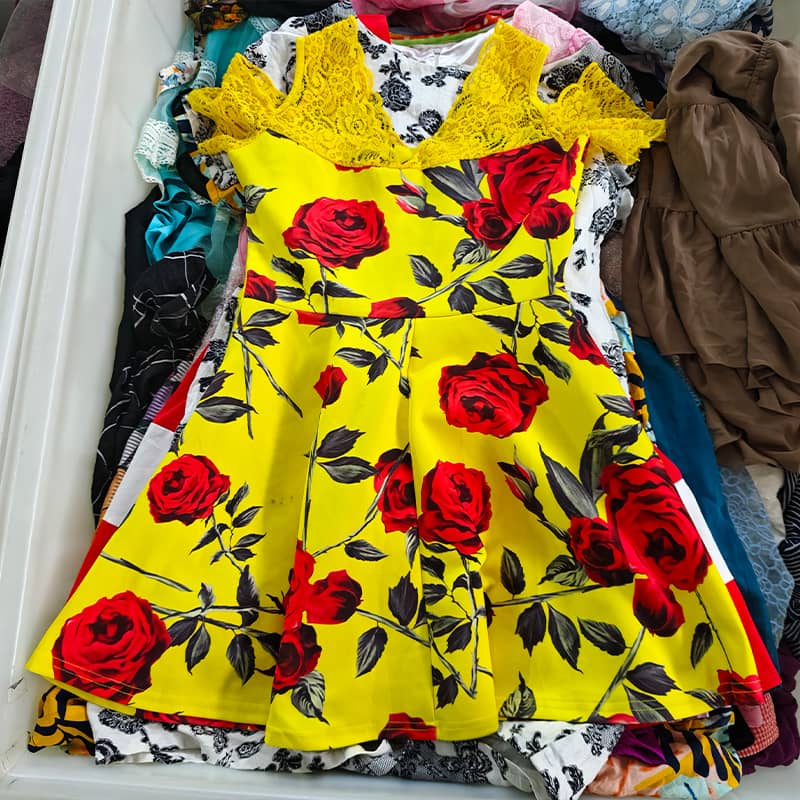In recent years, the Guinea used clothes market has become a hotspot for B2B buyers seeking cost-effective, sustainable solutions. With increasing consumer demand for affordable clothing, importers are looking to tap into this market’s potential. In this blog, we’ll uncover the latest market trends, opportunities for growth, and essential insights into sourcing reliable suppliers in 2024.

Table of Contents
1. Introduction to the Guinea Used Clothes Market in 2024
The Guinea second-hand clothes market is witnessing rapid growth in 2024, driven by increasing consumer demand for affordable secondhand apparel. As economic challenges persist, many Guineans rely on pre-owned garments to meet their clothing needs. This thriving market offers significant opportunities for B2B buyers looking to expand their operations in West Africa. Understanding the key dynamics of this sector is essential to tap into its full potential.
Overview of market growth and potential
Guinea’s economy, characterized by a mix of urban and rural communities, has made secondhand clothing a vital industry. The affordability and variety offered by Guinea used clothes meet the needs of consumers across income levels, creating a robust and sustainable market for importers.
Key drivers of demand for used clothes in Guinea
Factors like population growth, urbanization, and the rise of micro-businesses in Guinea contribute to the demand for Guinea used clothes. These clothes not only support local entrepreneurs but also provide affordable fashion options, making them indispensable for the local market.
2. Trends Shaping the Guinea Used Clothes Market
The Guinea used clothes market is undergoing significant transformation, influenced by shifting consumer preferences and a growing emphasis on global sustainability. These trends are not only reshaping the local market landscape but also providing valuable insights for B2B buyers looking to expand their operations. By understanding the high-demand categories, adapting to emerging fashion preferences, and aligning with sustainability initiatives, importers can successfully navigate and capitalize on the evolving market dynamics.
Popular product categories among consumers
In Guinea, the demand for secondhand clothing is largely driven by practicality and affordability. Lightweight clothing suited for Guinea’s warm climate, casual wear for daily activities, and children’s apparel are the most sought-after categories. Local consumers prioritize items that balance cost-effectiveness with usability, making these categories a cornerstone of the Guinea used clothes market. Suppliers who focus on sourcing and delivering these items in bulk are well-positioned to capture a larger share of the market, as they meet the everyday needs of Guinean families.
Emerging preferences in secondhand apparel
In recent years, the perception of secondhand clothing in Guinea has shifted, with many consumers viewing it as a means to access affordable yet trendy fashion. Stylish and durable garments, including branded items and well-maintained accessories, are gaining traction. This shift in preference underscores the importance of quality for B2B importers. By sourcing high-grade Guinea used clothes that appeal to fashion-conscious buyers, importers can tap into this growing segment and strengthen their position in the market. Additionally, local consumers are beginning to favor items that reflect individuality, further driving demand for unique and well-curated secondhand collections.
Impact of global sustainability initiatives
The rise of global sustainability movements has also made its mark on Guinea’s secondhand clothing industry. As awareness about textile waste and environmental conservation grows, secondhand clothing is increasingly seen as an eco-friendly alternative to fast fashion. This alignment with sustainability not only benefits the environment by reducing landfill waste but also bolsters Guinea’s local economy. Small businesses and informal retailers thriving in the Guinea used clothes sector are prime examples of how sustainability and economic growth can go hand in hand. For B2B buyers, embracing this global trend by sourcing sustainable secondhand garments can enhance their reputation while contributing to a more resilient and environmentally friendly supply chain.
3. Opportunities for B2B Buyers in Guinea
For B2B buyers, the Guinea used clothes market offers numerous opportunities to establish a strong foothold. From untapped regional markets to niche consumer needs, understanding these opportunities is crucial for success.
Untapped regions for secondhand clothing trade
While major cities like Conakry see significant trade activity, rural areas of Guinea remain underexplored. These regions present untapped potential for importers of Guinea used clothes, especially as demand grows in smaller towns.
How to identify profitable market segments
Importers focusing on specific segments, such as seasonal clothing or workwear, can better cater to Guinea’s diverse consumer base. Identifying these profitable niches within the Guinea used clothes market ensures sustainable growth.
Strategies to maximize ROI as an importer
Investing in bulk purchases and fostering partnerships with reliable suppliers are key strategies for importers. These approaches help B2B buyers reduce costs and ensure the availability of high-quality Guinea used clothes for the local market.
4. Finding Reliable Guinea Used Clothes Suppliers
The success of a B2B venture heavily depends on sourcing quality products from trustworthy suppliers. Building strong relationships with suppliers of Guinea second-hand clothes ensures consistent product quality and competitive pricing.
Top qualities to look for in suppliers
Reliable suppliers should provide a wide range of Guinea second-hand clothes, prioritize quality control, and demonstrate transparency in pricing. These traits are crucial for establishing a dependable supply chain.
Tips for vetting and establishing trust
B2B buyers can vet suppliers by visiting their facilities, requesting samples, and conducting due diligence on their operations. Establishing trust with Guinea second-hand clothes suppliers ensures long-term collaboration and business success.
Case studies of successful importer-supplier partnerships
Several importers have achieved success by partnering with established suppliers in Guinea. These partnerships enable access to high-demand Guinea used clothes, providing a competitive edge in the market.
5. Challenges and Solutions in the Guinea Used Clothes Market
The Guinea used clothes market offers significant opportunities for growth and profit; however, it is not without its challenges. For B2B importers aiming to establish a foothold, navigating the complexities of logistical networks, regulatory frameworks, and fluctuating consumer demand can be daunting. These obstacles, if not addressed effectively, can impact both operational efficiency and profitability. Understanding the nature of these challenges and implementing targeted solutions is key to succeeding in this dynamic sector.

Common obstacles faced by B2B importers
One of the most pressing challenges in the Guinea used clothes sector is customs delays. Import regulations in Guinea can be intricate and time-consuming, causing shipment bottlenecks that disrupt supply chains. Another frequent issue is inconsistent product quality. While secondhand clothing offers affordability, importers often struggle to maintain uniform standards, especially when sourcing from multiple suppliers. Additionally, high transportation costs, fueled by rising fuel prices and logistical inefficiencies, can significantly eat into profit margins. Together, these hurdles create a complex environment that requires careful planning and adaptability.
Practical solutions to logistical and regulatory issues
To overcome these challenges, B2B importers must focus on streamlining their operations. Establishing a reliable supply chain is paramount, and this can be achieved by partnering with experienced local logistics providers who understand Guinea’s infrastructure and customs procedures. For regulatory hurdles, staying up-to-date with Guinea’s trade laws and working with knowledgeable customs brokers can reduce delays and ensure compliance. Furthermore, adopting technology-driven solutions, such as inventory management software, can help maintain consistency in product quality by allowing for better tracking and sorting of Guinea used clothes shipments. By implementing these strategies, importers can enhance efficiency, mitigate risks, and maximize their profitability in this promising market.
6. Conclusion and Future Outlook for Guinea Used Clothes
The future of the Guinea used clothes market looks promising, with growing consumer demand and opportunities for B2B importers to thrive. By staying ahead of trends and establishing strong supplier relationships, businesses can secure their place in this dynamic industry. With proper planning and execution, the 2024 market offers immense potential for long-term success.






